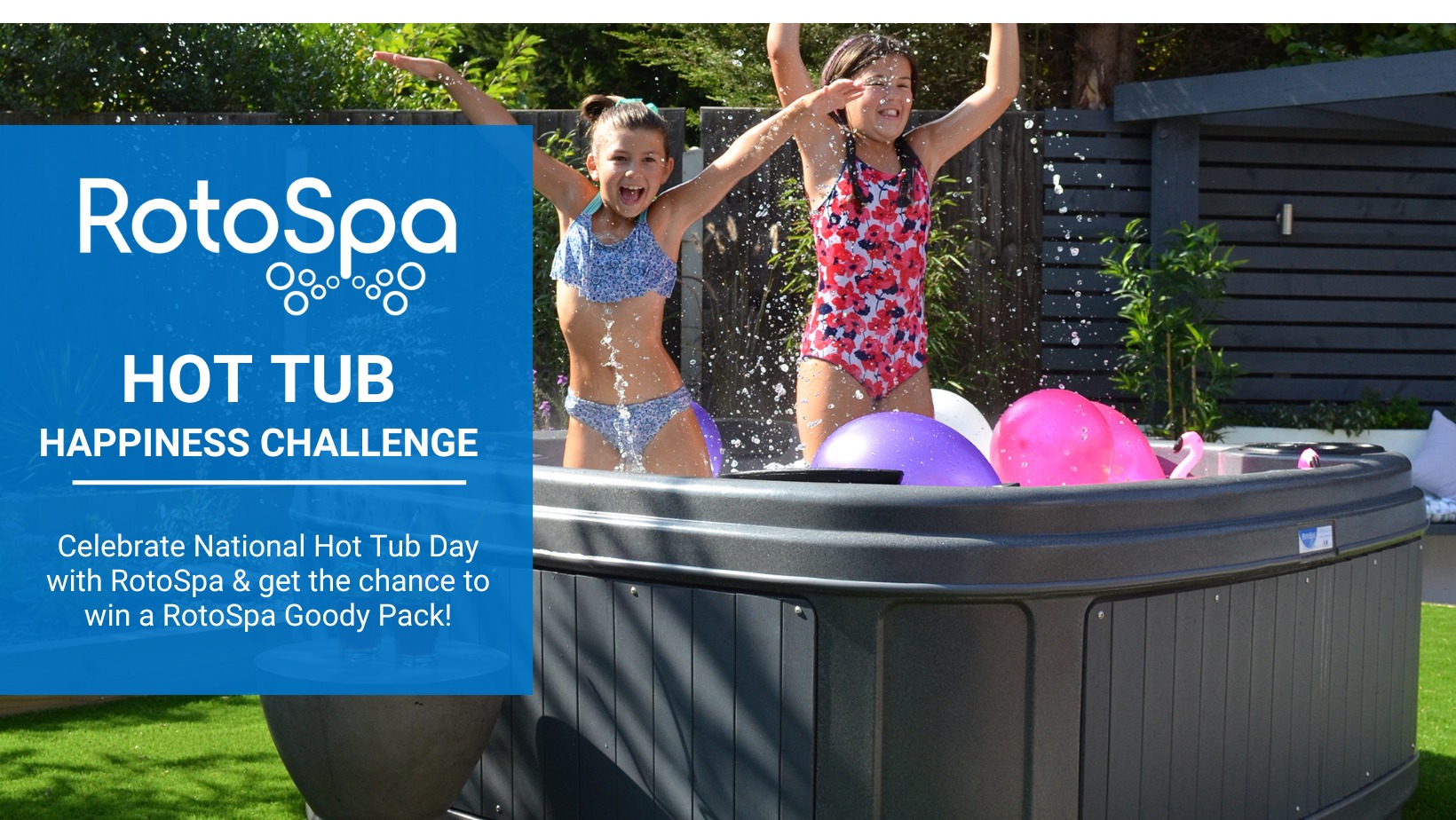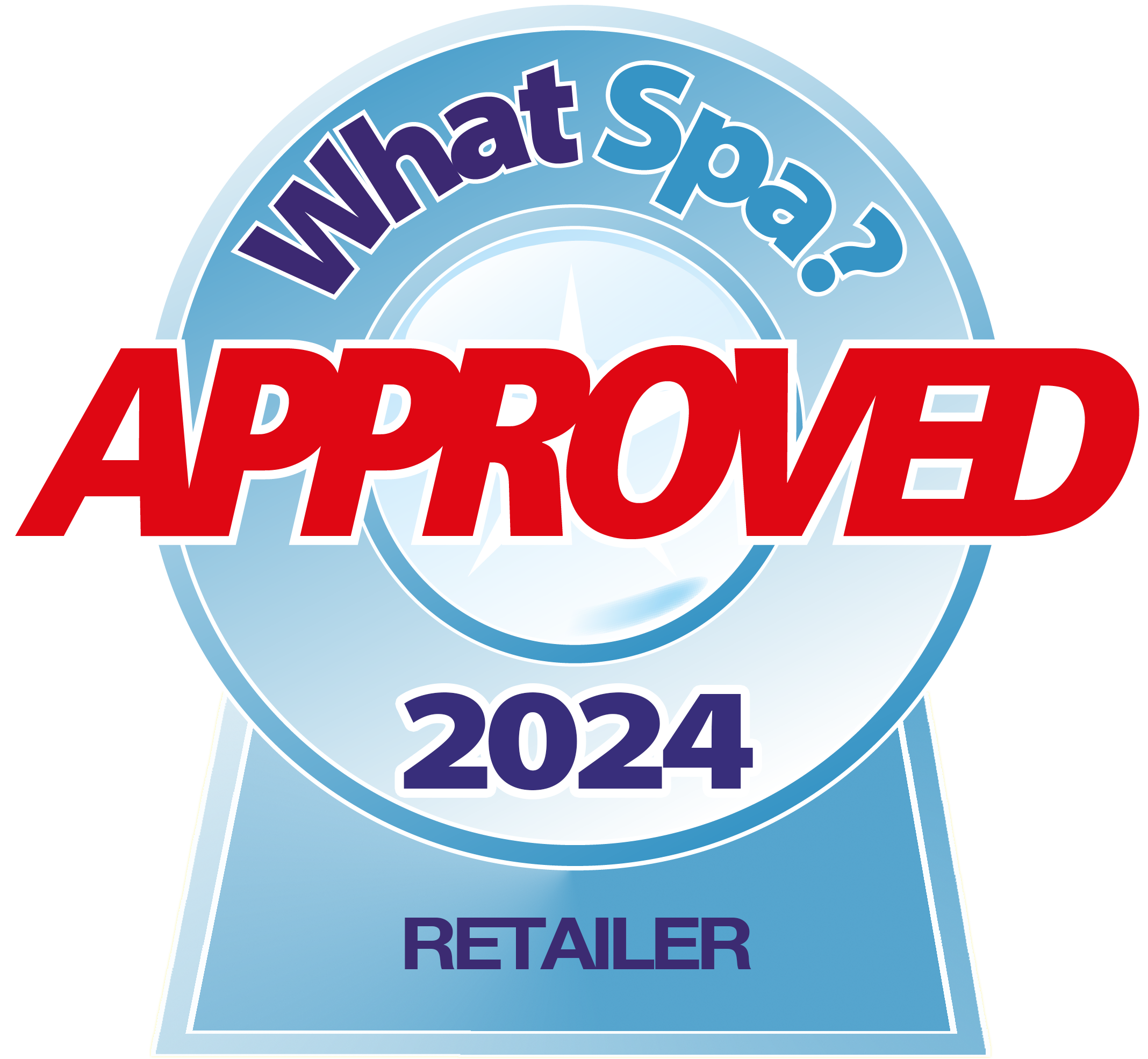Contemplating whether to dive into the luxury of a hot tub, yet puzzled about the cost? It’s no secret that hot tub costs can vary drastically, from a mere £300 for an inflatable version to over £25,000 for a premium acrylic model.
This guide aims to shed light on this fascinating subject as we uncover how much is a hot tub, hidden costs, and factors affecting price from size and design to maintenance and extra features. Exposure to these vital insights will not leave your spa dreams to evaporate; stick around!
Breaking down the cost of a hot tub
In this section, we will break down the cost of a hot tub, starting from entry-level options to premium and luxury models. Explore the different price ranges for value-priced hot tubs, highlighting factors such as manufacturing pricing and additional features that influence the overall cost.
Entry-level hot tubs
Entry-level hot tubs are the most affordable option for individuals seeking to enjoy the luxury of a hot tub without breaking the bank.
| Feature |
Description |
Price Range |
| Materials |
These hot tubs are primarily made of Polyethylene or acrylic, a cost-effective material. |
N/A |
| Jets |
Entry-level hot tubs come with minimal jets and water features for a basic hydrotherapy experience. |
N/A |
| Insulation |
Standard insulation is provided to maintain water temperature, but it may not be as efficient as in pricier models. At RotoSpa all hot tubs, including entry-level tubs, are made with Polyethylene, which has outstanding insulation properties. |
N/A |
| Price |
Average costs for entry-level hot tubs typically start at £3,000, making them the most budget-friendly option. RotoSpa’s hot tubs start at £3,995, which includes high-end R12 Roto therm insulation. |
From £3,000 |
Value-priced hot tubs
Value-priced hot tubs combine affordability with quality, offering a wide range of features without breaking the bank. These models blend luxury and value, providing excellent entry points for first-time hot tub owners.
| Features of Value-Priced Hot Tubs |
Price Range |
| Polyethylene or moulded acrylic shells |
Starting from £5,995 (Our RotoSpa value models start at £4,750 by comparison) |
| Increased jet count |
Included in the base price |
| Built-in sanitising systems |
Included in the base price |
| Pricing is impacted by dealer location, freight costs, and services |
Varies based on dealer. RotoSpa provides free shipping and installation (Ts & Cs apply) |
Remember, while models and features can vary between dealers, value-priced hot tubs present an excellent balance of cost and quality. As with any significant purchase, it’s worth doing your homework before buying.
Premium hot tubs
Premium hot tubs offer an elevated experience with advanced features and saltwater options. Many spa manufacturers’ luxury hot tubs typically start at £10,995. Here at RotoSpa, we offer a premium hot tub at a base rate of £5,595 without an air source heat pump, and £7,995 including an air source heat pump. An air source heat pump can bring down the cost of energy by up to 75%.
| Features |
Benefits |
| Advanced Features |
This category delivers premium features such as enhanced water jets, mood lighting, and digital control systems. |
| Efficient Insulation |
Premium models are designed with excellent insulation, ensuring optimal energy efficiency and lower running costs. All RotoSpa hot tub models boast some of the highest-quality insulation properties on the market. |
| Longer Warranty Coverage |
These quality hot tubs typically come with extended warranties, offering years of protection and guaranteeing a longer lifespan. RotoSpa hot tubs come with a lifetime warranty on the shell. |
| Price Range |
Premium hot tubs typically start at £10,995, however, RotoSpa offers a premium hot tub at £5,595. |
These hot tubs are an excellent investment for those seeking a luxurious spa experience at home.
Factors that influence the price of a hot tub
Hot tub prices are influenced by various factors, including manufacturing pricing, retail factors, and additional features. Discover what drives the cost of a hot tub and learn how to determine the best value for your investment.
Manufacturing pricing factors
Manufacturing pricing factors play a crucial role in determining the cost of a hot tub. These factors include:
- Construction. The materials and techniques used in constructing the hot tub can significantly impact its price. High-quality materials and composite panels may contribute to a higher cost.
- Performance. Hot tubs with advanced systems, such as built-in sanitising systems and saltwater options, tend to have a higher price tag due to the added functionality they offer.
- Interior and exterior. The design and aesthetics of the hot tub also play a role in its pricing. Features like high-end finishes, customisable options, and luxurious details can increase the overall cost.
- Jets. The number, type, and power of jets installed in the hot tub can affect its price. Models with more jets or specialised jet configurations are typically priced higher. Something to be aware of – many lower-end spa manufacturers add a lot of jets but not enough pumps to provide a satisfactory hydrotherapy experience. More pump power often requires more maintenance and a higher energy cost.
- Water care. Hot tubs equipped with efficient water treatment equipment, such as ultraviolet or ozone systems, may command a higher price due to their enhanced sanitisation capabilities.
- Energy efficiency. Manufacturing energy-efficient hot tubs typically involves incorporating advanced insulation materials and engineering techniques. While this can result in higher upfront costs for spa manufacturers, it ultimately reduces energy consumption for customers.
Retail factors
Retail factors play a significant role in determining the price of a hot tub. Here are some key factors to consider when it comes to the retail side of hot tub pricing:
- Dealer location and freight costs. The location of the dealer can impact the price of a hot tub, as shipping costs may vary depending on the distance. Dealers closer to the manufacturing facility may have lower transportation costs, which could result in more competitive prices. RotoSpa offers free shipping and installation so you don’t have to worry about these extra costs (Ts & Cs apply).
- Dealer overhead and store costs. Each dealer has its expenses, including rent, utilities, and staff wages. These overhead costs are factored into the final price of a hot tub.
- Dealer-provided services. Some dealers may offer additional services such as delivery, installation, and aftercare support. These services can add value but also contribute to the overall cost of a hot tub.
- Hot tub model-specific factors. Different hot tub models have varying prices due to factors such as size, features, engineering, quality, and design. Models with more advanced features or higher-quality materials will typically come with a higher price tag.
- Options and upgrades. Many hot tubs offer various options and upgrades that allow you to customise your spa experience. However, these additional features will incur added costs.
- Hot tub size: The size of the hot tub can affect its price as larger models require more materials and labour during manufacturing.
- Hot tub features. Special features like extra jets, LED lighting systems, audio systems, and advanced controls can increase the cost of a hot tub.
- Hot tub design. Unique or innovative designs may come with a higher price due to their aesthetic appeal or specialised manufacturing processes.
- Local hot tub dealer. Prices can vary among different local dealers based on competition, brand affiliation, and overall pricing strategy.
Additional features
In addition to the basic components of a hot tub, there are a variety of features that can enhance your hot tub experience. These extra features may incur extra costs but can provide added convenience and luxury. Here are some popular additional features to consider when purchasing a hot tub:
- Waterfall feature. A waterfall feature adds a stunning visual element to your hot tub and creates a soothing sound of running water to enhance a beautiful backyard.
- LED lighting. LED lights can be installed in and around the hot tub, allowing you to create a vibrant and customisable ambience during your soak.
- Bluetooth audio system. Enjoy your favourite tunes while relaxing in your hot tub by adding a built-in Bluetooth audio system. RotoSpa does not generally recommend installing a built-in Bluetooth audio system as you can often achieve better sound quality with a portable speaker for a fraction of the cost.
- Touchscreen control panel. Upgrade to a touchscreen control panel for ease of use and quick adjustments to temperature, jets, and lighting. RotoSpa hot tubs are equipped with user-friendly SpaNet controllers that also come with inbuilt timers that help reduce energy costs.
- Aromatherapy system. Enhance relaxation with an aromatherapy system that releases soothing scents into the water.
- Foot massagers: Some hot tubs offer foot massage jets specifically designed to target sore muscles in your feet.
- Multi-level seating. Opt for multi-level seating options where different seats have varying depths or heights for added comfort and versatility.
- Wi-Fi connectivity. Stay connected even while enjoying your hot tub by choosing a model with built-in Wi-Fi connectivity for easy monitoring and control via smartphone or tablet. RotoSpa hot tubs can provide this functionality.
- Water sanitisation. Consider upgrading to an advanced water sanitisation system. RotoSpa hot tubs have an inbuilt Ozone Sanitation system to kill bacteria and keep your hot tub pristine.
How much is a hot tub: The true cost of hot tub ownership
Owning a hot tub involves more than just the upfront cost; there are additional expenses to consider, such as installation costs, running costs, maintenance costs, and heating costs.
For a deeper dive into the true cost of hot tub ownership, check out our comprehensive guide where we go into detail on all aspects of what it will cost to run your hot tub.
Installation costs
Installing a hot tub comes with its own set of expenses that need to be considered when budgeting for your purchase. Hot tub installation costs can vary depending on factors such as the location and accessibility of your chosen spot, as well as any additional features you may want to include in your setup.
On average, installation costs can range from £500 to £2,000 or more. Larger hot tubs often require a crane/hiab to safely lift it into place. It’s important to keep in mind that these costs often involve professional services to ensure a safe and efficient installation. This includes tasks such as site preparation, plumbing and electrical connections, and securing any necessary permits.
RotoSpa hot tubs are specially designed to be portable to help avoid those extra installation costs. Taking these factors into account will help you plan accordingly and avoid unexpected expenses down the line.
Running costs
Running costs are an important factor to consider when purchasing a hot tub. These ongoing expenses can include electricity usage, current energy prices, water chemicals, and maintenance supplies. Heating the water is typically the largest contributor to running costs, accounting for a significant portion of monthly energy bills.
However, you can save money by using energy-efficient models and adjusting temperature settings when the hot tub is not in use. It’s also worth noting that regular maintenance and proper water care can help extend the lifespan of your hot tub and reduce repair costs down the line.
So, while there are additional expenses involved in owning a hot tub, being mindful of energy consumption and staying on top of maintenance can help keep these running costs manageable over time.
Maintenance costs
Maintaining a hot tub involves some ongoing costs to keep it clean and in optimal condition. Regular maintenance includes tasks such as cleaning the filter, testing and adjusting chemical levels, and draining and refilling the water periodically.
Additionally, you may need to invest in specific hot tub chemicals for treating the water, which will add to your overall maintenance expenses. It’s important to factor in these recurring costs when considering the total cost of owning a hot tub over its lifespan.
By staying on top of a regular maintenance schedule, you can ensure that your hot tub remains safe, hygienic, and enjoyable for years to come.
Heating costs
One important aspect to consider when it comes to the cost of owning a hot tub is heating expenses. Heating costs can be a significant expense in running a hot tub, especially if you plan on using it frequently.
The amount of energy required to heat the water depends on various factors such as the outside temperature, insulation quality, and size of the hot tub. It’s worth noting that while heating costs can add up over time, there are ways to save money by cooling the hot tub when not in use or investing in energy-efficient models that offer better insulation and air source heat pumps.
How to save money on owning a hot tub
Save money on owning a hot tub by implementing energy-efficient tips and following smart maintenance practices. Discover the best ways to reduce your heating costs and ensure your hot tub remains in top condition.
Read more for cost-saving insights that will have you enjoying your hot tub without breaking the bank.
Energy efficiency tips
- Choose a hot tub with high-quality insulation materials to reduce heat loss and save on energy costs.
- Opt for a hot tub with an energy-efficient pump and circulation system that consumes less electricity.
- Use a hot tub cover when your hot tub is not in use to prevent heat loss and reduce energy consumption.
- Maintain the water temperature at a comfortable level rather than excessively high, as higher temperatures require more energy to maintain.
- Regularly clean the hot tub filters to ensure optimal water flow and efficiency.
- Consider using a cover lift system to make it easier to remove and replace the cover, encouraging regular usage and reducing heat loss.
- Install LED lighting or other energy-efficient lighting options in your hot tub area to minimise electricity usage.
- Use a timer or programmable control system to regulate the operating hours of your hot tub, allowing you to customize when it runs and conserve energy during off-peak times.
- Invest in a hot tub with advanced insulation properties, such as Polyethylene to enhance energy efficiency.
- Take advantage of any eco-friendly features available in your hot tub model, such as ozone systems, which can help reduce chemical usage and related expenses.
Remember: By implementing these energy efficiency tips, you can enjoy your hot tub while keeping running costs down.
Maintenance tips
Maintaining your hot tub properly is essential for ensuring its longevity and maximising your investment. Here are some maintenance tips to keep in mind:
- Regularly test the water chemistry. Maintaining the correct balance of chemicals in your hot tub is crucial for keeping the water clean and safe. Test the pH, alkalinity, and sanitiser levels regularly using a reliable testing kit.
- Clean or replace filters. The filter in your hot tub plays a crucial role in trapping debris and preventing it from circulating back into the water. Clean or replace the filters as recommended by the manufacturer to ensure optimal filtration.
- Keep the water clean. Skim the surface of your hot tub regularly to remove any leaves, insects, or other debris that may have accumulated. Remember to also vacuum or use a net to remove any debris at the bottom.
- Drain and refill periodically. Over time, contaminants can build up in the water despite regular maintenance efforts. Draining and refilling your hot tub every three to four months helps refresh the water and maintain its quality.
- Maintain proper water temperature. High temperatures can lead to increased evaporation and chemical degradation, while low temperatures can promote bacterial growth. Keep your hot tub at an ambient temperature range recommended by the manufacturer.
- Protect against freezing temperatures. If you live in an area where temperatures drop below freezing, it’s important to take precautions to prevent damage to your hot tub. Insulate exposed pipes, use a freeze protection system if available, and follow winterisation guidelines provided by the manufacturer.
- Clean spa surfaces regularly. Use non-abrasive cleaners specifically designed for hot tubs to clean both the interior and exterior surfaces of your spa regularly. This helps prevent dirt buildup and ensures you maintain the cleanest spa water.
- Lubricate moving parts. Check hinges, latches, jets, and other moving parts regularly for smooth operation. Apply a silicone-based lubricant as recommended to keep them functioning properly.
- Monitor water level. Ensure the water level in your hot tub remains within the recommended range. Low water levels can strain the pump and heating system, while high levels may cause overflow and potential damage.
- Schedule professional servicing. Regular professional servicing by a qualified technician is highly recommended to identify any potential issues early on and ensure proper maintenance of your hot tub.
Conclusion
In conclusion, the cost of a hot tub can vary greatly depending on factors such as size, features, and quality. While cheaper options may seem attractive initially, they often come with higher running costs and shorter lifespans. Investing in a reputable spa manufacturer and dealership can provide better build quality, longer lifespan, and lower overall costs in the long run. So when considering how much is a hot tub, it’s important to look beyond just the upfront price and consider the value and benefits that come with a higher-priced option.
Frequently Asked Questions (FAQs)
1. Does a hot tub use lots of electricity?
Hot tubs do require an electricity supply, but the amount of electricity they use varies depending on factors such as size, features, and energy efficiency. It’s important to consider this when calculating the overall cost of owning a hot tub. Higher-quality models with good insulation can help reduce running costs by minimising heat loss.
Additionally, advanced systems like saltwater or energy-efficient heating options can further optimise electricity usage. So while hot tubs do use electricity, choosing a well-insulated and energy-efficient model can help minimise your monthly utility bills.
2. What is the cheapest way to run a hot tub?
To minimise your hot tub’s running costs, it is essential to consider energy efficiency. Look for a hot tub that has efficient insulation materials, such as Polyethylene, high-density foam or full-foam insulation, which helps to retain heat and reduce the need for constant reheating.
Opting for a model with an advanced water care system, like ozone or mineral systems, can also help in reducing chemical usage and maintenance expenses. Additionally, selecting a smaller-sized hot tub would require less water and energy to heat up.
These cost-effective measures can significantly lower your monthly utility bills while still allowing you to enjoy the relaxation and benefits of owning a hot tub.
3. How much energy will a hot tub use?
Hot tubs are known for their relaxation benefits, but many people wonder about their energy consumption. The amount of energy a hot tub uses depends on various factors like insulation quality, cover effectiveness, and climate.
However, newer models have become more energy-efficient in recent years, resulting in a smaller increase in monthly electric bills. Hot tub owners have reported an average increase of £30 to £50 on their electricity bills.
To further reduce energy usage, it’s important to properly maintain your hot tub by using a high-quality insulated cover and regularly cleaning the filters. This way, you can enjoy your hot tub without worrying about excessive energy consumption.
4. How much does a hot tub typically cost?
The price of a hot tub can vary depending on various factors such as the size, features, brand, and quality. On average, you can expect to pay anywhere from £2,000 to £15,000 or more for a hot tub.
5. Are there any ongoing costs associated with owning a hot tub?
Yes, there are ongoing costs associated with owning a hot tub. These include water and electricity bills as well as maintenance expenses for cleaning products, filters, and possible repairs.
6. What factors can affect the overall cost of owning a hot tub?
Several factors can influence the overall cost of owning a hot tub. Some key considerations include installation fees if any modifications are needed for your property’s electrical supply or plumbing system, additional accessories like covers and steps, optional upgrades such as built-in sound systems or lighting features, and regular maintenance expenses.
7. Are there financing options available for purchasing a hot tub?
Yes, many retailers offer financing options to make it more affordable to purchase a hot tub. You may be able to secure low-interest loans or choose instalment payment plans that suit your budget and financial situation. It’s always best to inquire about financing options directly with the retailer when considering buying a hot tub. Here at RotoSpa, we offer 0% finance. Please contact us for more information.




